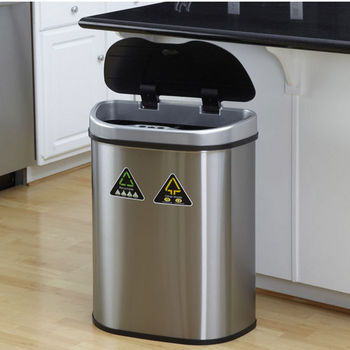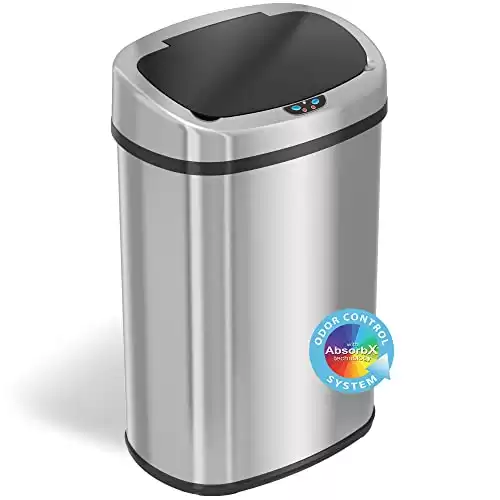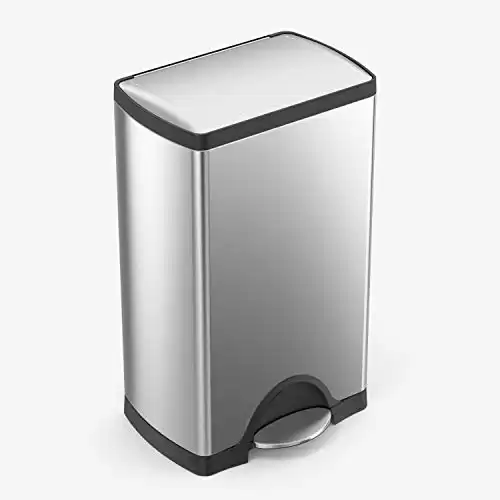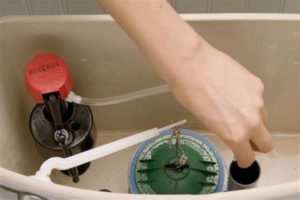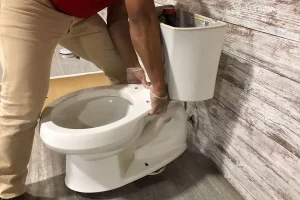Trash Cans for Residential Homes Guide
Trash cans are an essential part of any residential home. They help keep our living spaces clean and organized by providing a designated place to dispose of waste. In this blog, we will explore different sizes and types of trash cans available for residential use, discuss where they should be stored, and offer tips on how to maintain them. We will highlight the differences between trash cans and recycle bins to promote eco-friendly waste management practices.
The amount of trash generated from an average residential property can vary based on various factors, such as the size of the household, lifestyle choices, and recycling habits. However, on average, a residential property generates around 4 to 6 pounds (1.8 to 2.7 kilograms) of trash per person per week. This estimate includes non-recyclable waste and recyclable materials that may not be properly sorted. Remember, practicing effective waste reduction and recycling can significantly reduce the amount of trash sent to landfills.
Recyclable materials refer to items that can be processed and reused to create new products. These materials can be collected, sorted, and processed through recycling programs. Common recyclable materials found in residential trash include:
1. Paper and Cardboard: This includes newspapers, magazines, office paper, cardboard boxes, and cereal boxes.
2. Plastic Containers: Look for the recycling symbols and numbers on the bottom of plastic containers. Typically, plastic bottles, jars, and containers labeled with numbers 1 to 7 are recyclable.
3. Glass: Clear, green, and brown glass bottles and jars can usually be recycled. It’s important to separate them by color to ensure proper recycling.
4. Metal Cans: Aluminum cans (such as beverage cans) and steel cans (like food cans) are recyclable. Rinse them to remove any remaining food residue.
Non-recyclable materials, on the other hand, are items that cannot be processed through regular recycling channels and should be disposed of as regular trash. These materials include:
1. Plastic Bags and Wrappers: Thin plastic bags, plastic film, candy wrappers, and chip bags are not typically accepted in curbside recycling. They can cause issues at recycling facilities and should be placed in regular trash.
2. Styrofoam: Expanded polystyrene foam (commonly known as Styrofoam) is generally not recyclable through curbside recycling. It should be discarded as regular trash.
3. Dirty or Soiled Items: Items contaminated with food waste, grease, or other substances, such as heavily stained paper plates or pizza boxes, are generally not recyclable due to the difficulty of separating the contaminants.
4. Hazardous Materials: Items like batteries, electronics, paint cans, and chemicals are considered hazardous waste and should be disposed of through designated programs or drop-off locations to ensure safe handling and disposal.
Following proper sorting practices and separating recyclable materials from non-recyclables helps promote effective waste management and contributes to a more sustainable future.
1. Sizes and Types of Trash Cans:
Trash cans come in various sizes and types to suit different needs and preferences. Here are some common options:
a) Small Trash Cans: These compact cans, typically ranging from 2 to 5 gallons, are ideal for spaces with limited room, such as bathrooms or home offices. They can accommodate everyday waste like tissues and small packaging.
b) Medium Trash Cans: Ranging from 8 to 13 gallons, medium-sized cans are commonly found in kitchens and other high-traffic areas. They can handle larger amounts of waste and are suitable for disposing of food scraps and regular household trash.
c) Large Trash Cans: Designed for larger households or those with specific needs, these cans can hold 20 gallons or more. They are well-suited for disposing of bulky items or when trash collection services are less frequent.
d) Outdoor Trash Cans: These rugged cans are made to withstand the elements and are commonly used for curbside collection. They are available in various sizes and are equipped with lids to prevent animals from accessing the trash.
2. Trash Can Storage Locations:
Determining the right storage location for your trash cans is crucial for maintaining cleanliness and convenience. Here are a few considerations:
a) Kitchen: Keep a medium-sized trash can in or near the kitchen for easy access when preparing meals. Consider placing it in a discreet spot, such as under the sink or in a dedicated cabinet with proper ventilation.
b) Bathrooms: Small trash cans are ideal for bathrooms. Place them near the toilet or vanity area to encourage proper disposal of items like tissues, cotton swabs, and sanitary products.
c) Outdoor Storage: If you store your trash cans outdoors, select a secure area away from direct sunlight to prevent odors and discourage pests. Ensure that the cans are protected from rain and have tight-fitting lids.
3. Maintaining Trash Cans:
Proper maintenance is essential to prevent foul odors, pests, and potential health hazards. Here are a few tips to keep your trash cans clean:
a) Regular Cleaning: Rinse out your trash cans at least once a month with a mixture of water and mild detergent. Scrub the interior and exterior surfaces to remove any residue or stains. Make sure to dry them thoroughly before use.
b) Use Liners: Always use trash can liners or bags to prevent waste from coming into direct contact with the can. This makes emptying the trash easier and helps keep the can clean.
c) Deodorizers: To combat odors, consider using deodorizers specifically designed for trash cans. These can be in the form of scented bags, deodorizer disks, or sprays. Additionally, placing baking soda at the bottom of the can can help absorb odors.
Discovering maggots in your trash can can be quite unpleasant, but it’s a problem that can be resolved with prompt action. Here’s a step-by-step guide on how to remove maggots from your trash cans:
1. Safety Precautions:
Before you begin, make sure to wear gloves and protective clothing to avoid direct contact with the maggots or any potential bacteria. It’s also advisable to work in a well-ventilated area.
2. Empty the Trash Can:
Take the trash can outside to a suitable location, away from living spaces. Carefully empty the contents of the trash can into a heavy-duty garbage bag. Tie the bag securely to prevent any maggots from escaping.
3. Clean the Trash Can:
Thoroughly rinse the empty trash can with hot, soapy water. Use a long-handled brush or sponge to scrub the interior surfaces, ensuring you reach all corners and crevices. Pay extra attention to any areas with visible maggots or residue.
4. Apply a Cleaning Solution:
After the initial scrubbing, prepare a cleaning solution using a mixture of equal parts water and vinegar or bleach. Both vinegar and bleach are effective at killing maggots and removing any lingering odor. Apply the solution generously to the inside of the trash can, making sure to coat all surfaces.
5. Scrub and Rinse:
Using the brush or sponge, scrub the interior of the trash can again, focusing on areas where maggots were present. This will help dislodge any remaining maggots or debris. Once scrubbed, rinse the trash can thoroughly with clean water to remove the cleaning solution.
6. Dry the Trash Can:
Allow the trash can to air dry completely before using it again. Drying in direct sunlight can also help kill any remaining maggots or eggs.
7. Prevent Future Infestations:
To prevent maggots from returning, consider implementing the following preventive measures:
a) Double Bagging: Place your trash in double bags to create an extra layer of protection and prevent maggots from accessing the waste.
b) Regularly Empty the Trash: Avoid letting trash accumulate for extended periods. Regularly emptying the trash can and disposing of waste in a timely manner reduces the likelihood of maggots appearing.
c) Use Trash Can Liners: Always use trash can liners or bags to contain the waste. This not only makes emptying the trash easier but also keeps the trash can cleaner.
d) Clean and Maintain: Routinely clean your trash can, even if there are no maggots present. Regular cleaning helps eliminate any potential odors or attractants that may entice maggots.
4. Using Trash Cans and Recycle Bins:
Differentiating between trash cans and recycle bins is vital for effective waste management. Here’s a quick comparison:
a) Trash Cans: These are designated for non-recyclable waste, such as food scraps, soiled items, and certain types of packaging. They ultimately end up in landfills or waste-to-energy facilities.
b) Recycle Bins: Recycle bins are specifically for recyclable materials like paper, plastic, glass, and metal. Sorting your waste correctly and utilizing recycle bins helps reduce landfill waste and conserves resources through recycling processes.
Trash cans play an essential role in maintaining cleanliness and order within residential homes. You can ensure a hygienic living environment by choosing the right size and type of trash can, storing them appropriately, and practicing good maintenance. Understanding the distinctions between trash cans and recycle bins empowers you to adopt eco-friendly waste management practices and contribute to a sustainable future.
Remember, responsible waste disposal is everyone’s responsibility, and the choices we make today can have a positive impact on the environment tomorrow.

